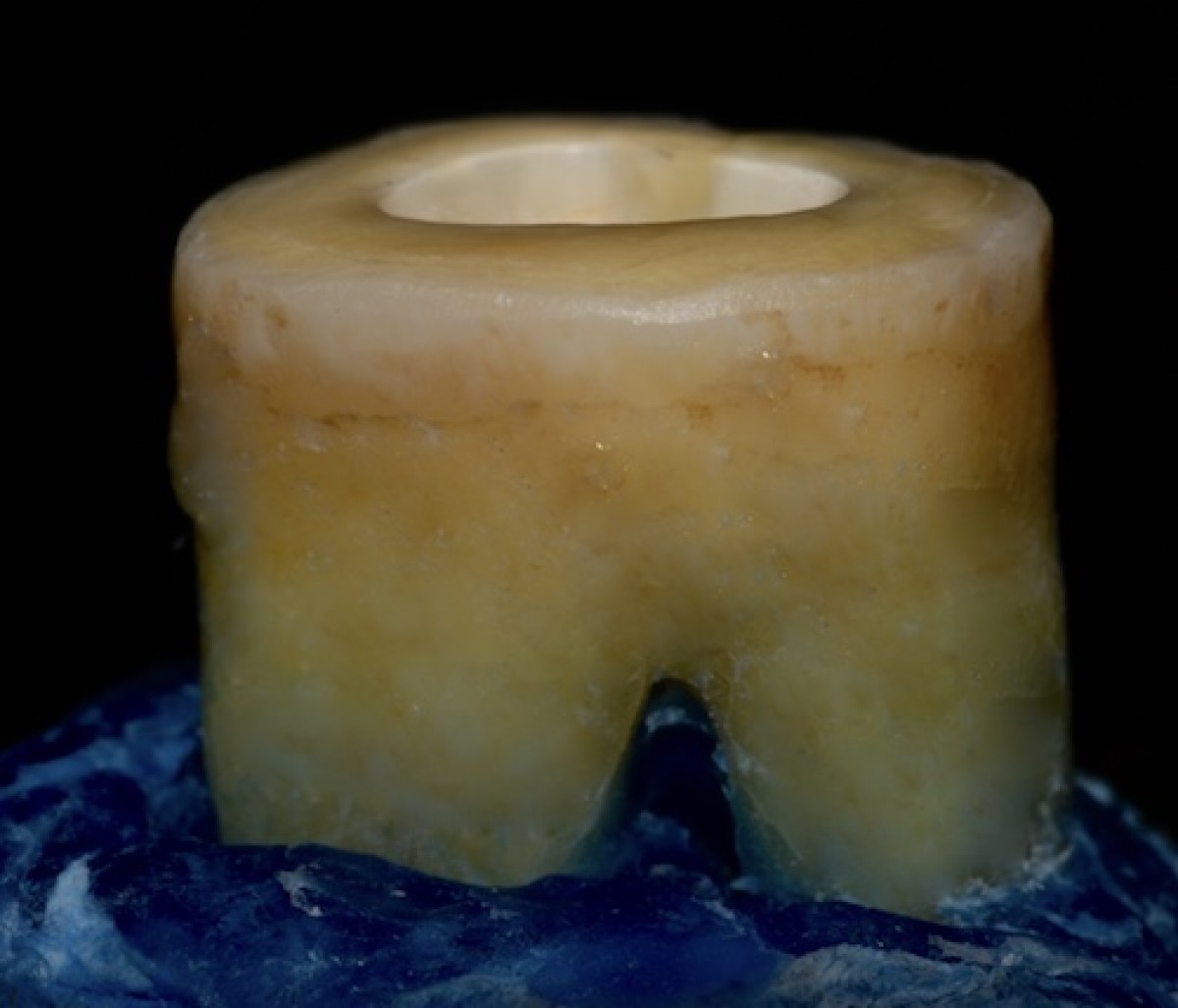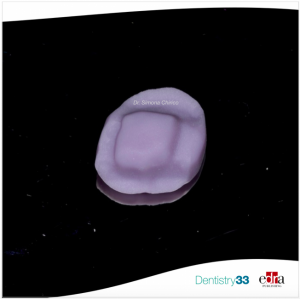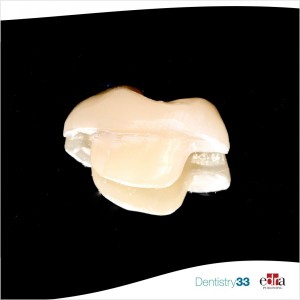
Influence of endocrown translucency on the degree of conversion of the luting dual resin cement
Co-authors:Roberto Spreafico, Annalisa Mazzoni, Andrei Cristian Ionescu, Eugenio Brambilla, Lorenzo Breschi, Massimo Mario Gagliani
Simona Chirico
There are several parameters that influence the degree of conversion of dual cement, such as: the type of light source used for the polymerization, the intensity of the light source, the thickness of the restoration and the translucency of the material used for the restoration. The purpose of this study was to investigate the effect of translucency of ceramic material on the degree of conversion of a dual-cure resin cement used to lute endocrowns.
Material and Methods
A freshly extracted first maxillary molar, without any dental caries, was used and prepared to receive an endocrown, according to Bindl and Mörmann criteria. The cavity preparation was acquired by an intraoral scanner (Cerec Omnicam, Dentsply Sirona) with the aim of executing the entire workflow digitally, from the design to the milling of endocrowns. In this way, 12 endocrowns, with 4.5 mm thickness, were produced by a milling machine (Cerec MCXL Wounder, Dentsply Sirona). The tested material was zirconia-reinforced lithium silicate with a high translucency (HT, n=6) (Celtra Duo, Dentsply Sirona) and with a low translucency (LT, n=6) (Celtra Duo, Dentsply Sirona). After applying an insulator (Separating Fluid, Ivoclair) to the tooth, the dual cement (Calibra Dual Resin Cement, Dentsply Sirona) was applied to the endocrown. The endocrowns were placed on the tooth one by one and cured for 60 s using a LED light-curing unit (Valo, Ultradent), with a light intensity of 1000 mW / cm². The excesses of dual cement were removed by using a probe. Additionally, six samples of dual cement, sized 5.0 x 7.0 mm, were prepared with a thickness of 1.0 mm, serving as control group (Control) and polymerized for 60 s through a Mylar strip. The microhardness (Vickers) of the dual cement was evaluated at the bottom of the luted endocrowns and the controls. The results were statistically analyzed with one-way ANOVA and Fisher’s test (p<0.05).
Results
Significantly highest mean microhardness values were recorded in the control group (Control): 41.9 (± sd 1.8). Endocrowns with low translucency (LT) produced the significantly lowest values: 29.6 (± sd 0.8) (p<0.05 compared to the control). Control and HT groups were not significantly different (p>0,05).
Conclusions
The microhardness of the dual cement is strongly dependent on both the translucency of the material with which endocrowns are produced. A low translucency leads to a significantly lower degree of conversion, which cannot guarantee a long-lasting restoration.
Clinical implications
Dual cements have been designed to ensure an optimal degree of conversion, regardless of the presence or absence of a light source and its intensity. This does not apply in the case of their use for endocrown luting procedures. In fact, the degree of conversion of dual cement depends not only on the type of light source and its intensity, but also and above all on the translucency of the restoration. Different levels of translucency affect the microhardness of the luting resin cement, potentially affecting its adhesive strength and, ultimately, the longevity of the chosen prosthodontic treatment.
 Related articles
Related articles
Endodontics 28 February 2023
Chirico works in private practice in Milan and Desio, Italy. Her principal areas of expertise are digital dentistry, endodontics and restorative dentistry. ...
Prosthodontics 12 February 2023
There are various types of materials used to perform this type of restoration. But which of these has a better mechanical behavior?
Prosthodontics 09 September 2022
Evaluation of Endocrown preparation and fracture resistance in endodontically treated teeth
Lateral-posterior teeth, after endodontic therapy, require adequate restorations to re-establish masticatory function and minimize the risk of fracture, as well as ensure a perfect seal to prevent...
Digital Dentistry 29 July 2022
Endocrown VS Crown+Post: which is the best restoration for endodontically treated teeth?
The restoration of endodontically treated teeth is still a discussed topic in dentistry. Today, the most common restoration for endodontically treated teeth...
Prosthodontics 11 May 2022
How much does the thickness of lithium disilicate affect the fracture resistance of the endocrown?
The restoration of severely damaged endodontically treated teeth is still a discussed topic in dentistry. Today, the most common restoration for endodontically treated teeth involves post and crown,...
 Read more
Read more
Much like EMTs rushing to the scene after an accident, stem cells hurry to the site of a skull fracture to start mending the damage. A new finding has uncovered the signaling mechanism that triggers...
Products 05 November 2025
SimplyTest has launched a groundbreaking saliva-based test to detect high-risk strains of oral human papillomavirus (HPV), a major cause of oropharyngeal cancers.
News 05 November 2025
Perimetrics, Inc., a dental technology company pioneering quantitative diagnostics, announced today that the U.S. Food and Drug Administration (FDA) has granted clearance for the InnerView...
News 05 November 2025
On October 15, open enrollment for Medicare began nationwide. Hundreds of thousands of seniors in New Jersey will once again face the challenge of finding the right Medicare coverage, including the...
Digital Dentistry 04 November 2025
Digitalisation is an expanding field in dentistry and implementation of digital teaching methods in dental education is an essential part of modern education.















